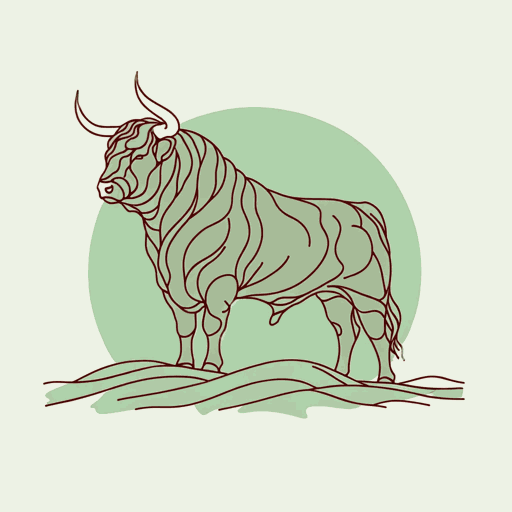67 pages • 2 hours read
Transl. Thomas KinsellaThe Tain
Fiction | Novel | Adult | Published in 2002A modern alternative to SparkNotes and CliffsNotes, SuperSummary offers high-quality Study Guides with detailed chapter summaries and analysis of major themes, characters, and more.
Summary and Study Guide
Overview
The Táin, or the Táin Bó Cuailnge, is an Irish epic that is part of the larger Ulster epic cycle set in a pre-Christian heroic age. Thomas Kinsella’s 1968 translation, which is referred to in this guide, is based on two main sources: a 12th-century partial manuscript and a late 14th-century partial manuscript, both compiled by Christian monks in Irish monasteries. The Celtic source material for The Táin is far more ancient and would have had a long existence as an oral history in early medieval Ireland. The Ulster cycle itself is thought to be set in the 1st century AD, as evidenced by elements of Celtic folklore and pre-Christian deities, as well as the use of chariots, cattle-raiding, and barbaric practices like beheading.
The Táin translates as the “cattle raid of Cooley” and is the central text in a cycle of epics that follow Cúchulainn. The action takes place between Connacht and Ulster, as the armies move across present-day County Louth. Included in this guide are several remscéla, or pre-tales, that provide context for the main narrative. The Táin and the Ulster cycle more broadly have had an enormous impact on Irish literature through the centuries and are sometimes considered Ireland’s national epic.
The Táin is told in the third person with a directness that plainly describes death, mutilation, killing, and bodily matters such as urination, menstruation, miscarriage, sex, and seduction. Some parts are told in a neutral realism, while others contain elements of fantasy, folklore, and mysticism. The style shifts between verse and prose; verse passages may border on undecipherable abstraction, particularly when delivered as prophetic, and others reflect a logical, rhetorical debate or dialogue between characters. In both verse and prose the narrative is occasionally picked up by characters like Cúchulainn’s charioteer Laeg or Fergus mac Roich, who provide extrapolative moments for the listener/reader.
The lack of a unifying narrative tone is rooted in the tale’s oral history, for while The Táin survives in manuscripts, the Ulster cycle would have been transmitted orally by skilled poets and bards capable of reciting the tale on command. For this reason, there are factual inconsistencies, shifts in style, and an abundance of mundane details that reflect the values and style of medieval Irish literature. Like many premodern texts, The Táin is both ambiguous and abstract, allowing for a wide variety of interpretations and readings by modern readers.
Plot Summary
The prehistories of The Táin outline the origins of Conchobor and Cúchulainn, existing conflicts including Fergus mac Roich’s exile, the pangs of Ulster, Cúchulainn’s training and coming of age, and the bulls Donn Cuailnge and Finnbennach.
The Táin opens with Queen Medb and her husband King Ailill comparing their respective resources to find that the only thing Medb lacks is a bull to match Finnbennach Ai, the White-Horned, of Ailill’s herd. Medb seeks to borrow Donn Cuailnge, the Brown Bull, from Dáire mac Fiachna, but the deal falls through when her messengers are overheard boasting that Medb would have taken the bull by force if necessary. Medb raises an army to capture Donn Cuailnge, which includes Ulstermen in exile headed by Fergus mac Roich.
The men of Ulster are overcome with their “pangs” at this time, so 17-year-old Cúchulainn is the only one capable of holding back the Irish armies until they are free. Medb’s forces capture the Brown Bull, so Cúchulainn sporadically challenges and attacks them, eventually invoking the right of single combat at fords. Day-by-day he defeats each challenger, thus buying time for the Ulstermen to recover and join him in the final battle.
Supernatural forces both help and hinder Cúchulainn throughout, from the Morrígan, who interferes with combat and incites the troops, to Lug mac Ethnenn, his father from another world, who helps him recover after a difficult combat. Others engage in holding off the Irish armies when Cúchulainn is debilitated, from the boy troops to older warriors. While Medb undermines agreements and truces, Fergus shares crucial information with Cúchulainn to help him succeed.
At one point Fergus is sent to fight Cúchulainn, and the latter agrees to yield to him in exchange for a future yield. Cúchulainn’s foster brother Ferdia is called to fight next. While Cúchulainn pleads for him to withdraw, Ferdia refuses, and their combat lasts three days. Cúchulainn wins, killing Ferdia with his gae bolga, after which Cúchulainn is carried away to heal.
The Ulstermen begin to recover and come to fight off the Irish armies. King Conchobor leads his army into battle and is attacked by Fergus, but Cormac intervenes, and Fergus cuts off the tops of three hills instead. Cúchulainn finally joins the battle, confronts Fergus, and invokes his promise to yield. Fergus abides and withdraws his forces. This clears the path for Cúchulainn, and the remaining forces are routed. Medb is forced to retreat, and when Cúchulainn finds her urinating, he spares her life but guards her retreat.
The two bulls meet in Connacht and fight. After Finnbennach is killed, Donn Cuailnge wanders around Ireland as pieces of Finnbennach fall off his horns. The brown bull returns home to collapse and die, and peace reigns between the two armies for seven years.

